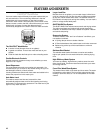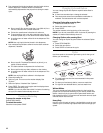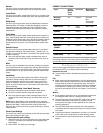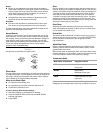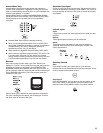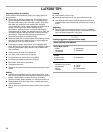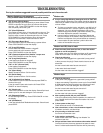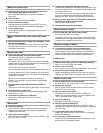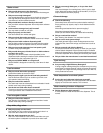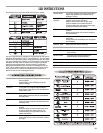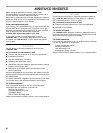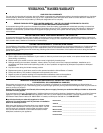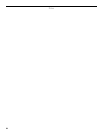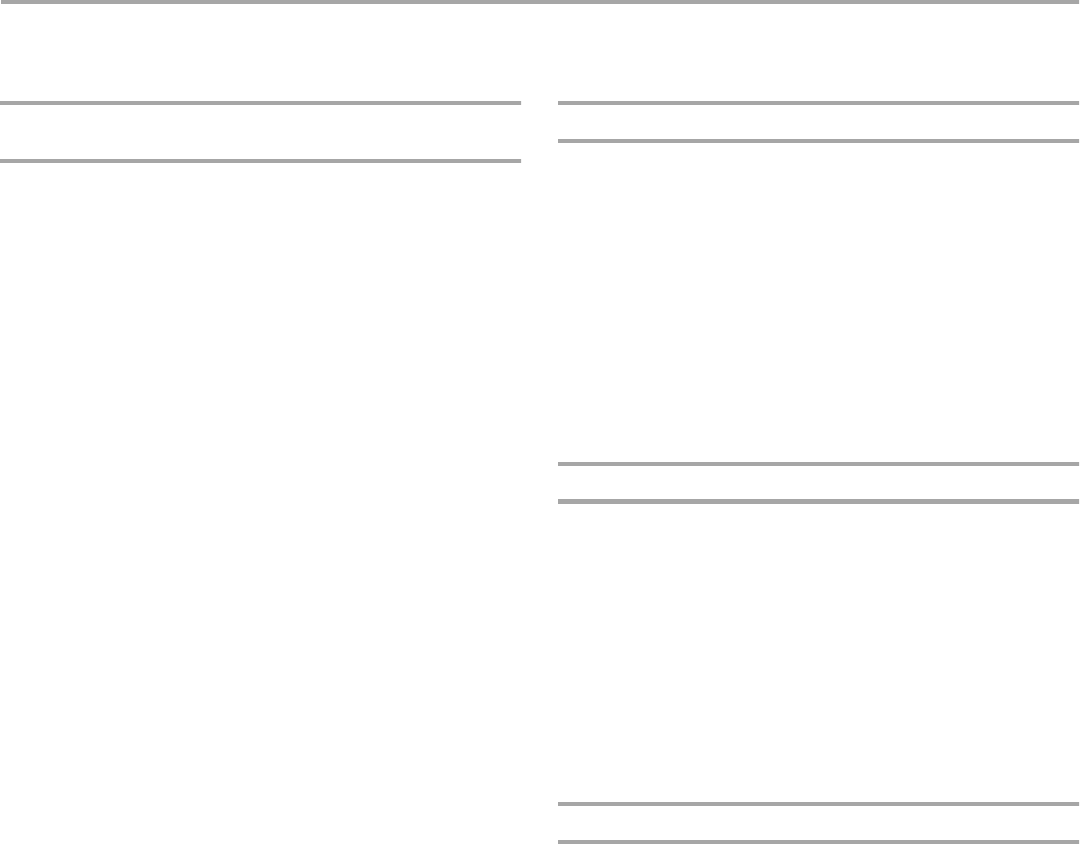
18
TROUBLESHOOTING
First try the solutions suggested here and possibly avoid the cost of a service call...
Washer displaying code messages.
If any of these codes continue to occur, call for service.
■ “PF” (Power Failure) flashes
Was the washing cycle interrupted by a power failure? Press
START to continue the cycle from the moment that power
was lost, - OR - Press STOP/CANCEL to clear the display
and completely cancel the cycle.
■ “FL” (Over Fill) flashes
The washer will beep every 10 seconds with no time-out. The
pump will cycle ¹⁄₂ minute on, ¹⁄₂ minute off, until the overfill
switch is reset or power is discontinued to the unit. Press
STOP/CANCEL to clear the display. Shut off the water
faucets to the inlet hoses if water continues to flow.
■ “Er” (Processor Reset Error)
Cycle information was not stored during a power failure.
Press STOP/CANCEL to clear the display.
■ “LF” (Long Fill) flashes
Are the water inlet hoses kinked or clogged?
Are the water inlet valve screens clear?
Press STOP/CANCEL to clear the display.
■ “CE” (Communications Error) flashes - beeps once
Press STOP/CANCEL to clear the display.
■ “Ld” (Long Drain) flashes
Is the drain hose kinked or clogged?
Press STOP/CANCEL to clear the display.
■ “CA” or “CL” (Current Limit)
Is the washer overloaded?
Press STOP/CANCEL to clear the display.
■ “Or” (Open Relay)
Washer operation failure. Call for service.
■ “Sr” (Stuck Relay)
Washer operation failure. Call for service.
■ “LS” (Lid Switch Error) flashes
Is the washer lid open? Close the lid and press START to
continue the cycle.
Is the lid closed? Open and close the lid. Press STOP/
CANCEL to clear the display.
■ “SL” (Suds Lock)
Press STOP/CANCEL to clear the display. Extend Spin load:
restart cycle. Do not add detergent. Use cold water.
■ “dt” (Diagnostic Tests)
For service diagnostics only. Press STOP/CANCEL to clear
the display.
■ “ob” (Off Balance)
Is the load unbalanced? Redistribute the load. Close lid and
press START.
Washer odor
■
Are you using High Efficiency detergents such as Tide
®
HE?
Use the following procedure. Your washer should be cleaned at
least once per month to reduce or prevent any accumulation of
mold or mildew.
■ To clean your washer interior, add both 1 cup (250 mL) of
chlorine bleach and 1 scoop or capful of High Efficiency
detergent, into your detergent dispenser, and run the
washer through the Normal cycle without clothes, using
hot water. Repeat this process if necessary.
■ Inspect interior of washer for lint and other debris that
may accumulate on the basket, wash plate and tub ring.
Remove and dispose of any accumulation as necessary.
■ Leave washer lid open between cycles to allow the
interior of the washer to dry out.
Washer won’t fill, rinse or wash
■ Does the water level seem too low, or does the washer
appear to not fill completely?
This washer uses very little water and does not fill completely.
Water will not be seen over the top of the wash plate.
■ Check the following:
Is the power cord plugged into a grounded 3 prong outlet?
Is there power at the plug? Check electrical source or call
electrician.
Are the hot and cold water faucets turned on?
Is the water inlet hose kinked?
Are the water inlet valve screens clogged?
Washer stops
■ Check the following:
Is the power cord plugged into a grounded 3 prong outlet?
Is there oversudsing? Cancel the current cycle. Press RINSE
& SPIN to drain the load. Re-select your desired cycle and
press START. Do not add detergent. Use cold water.
Are the hot and cold water faucets turned on?
Is the water inlet hose kinked?
Are the water inlet valve screens clogged?
■ After opening the lid, did you press START?
If the lid is opened during washer operation, the washer will
stop. Closing the lid will not restart the washer. You must
press START.
■ Is there power at the plug?
Check electrical source or call electrician.
■ Has a fuse blown, or has a circuit breaker tripped?
If problem continues, call electrician.
■ Are you using an extension cord?
Do not use an extension cord.
■ Is the washer overloaded?
Wash smaller loads. See “Starting Your Washer” for
maximum load size.
■
Did you add more items to the load once the washer started?
Once the load is wet, there may appear to be space for more
items. For best results determine load size with dry items only.



